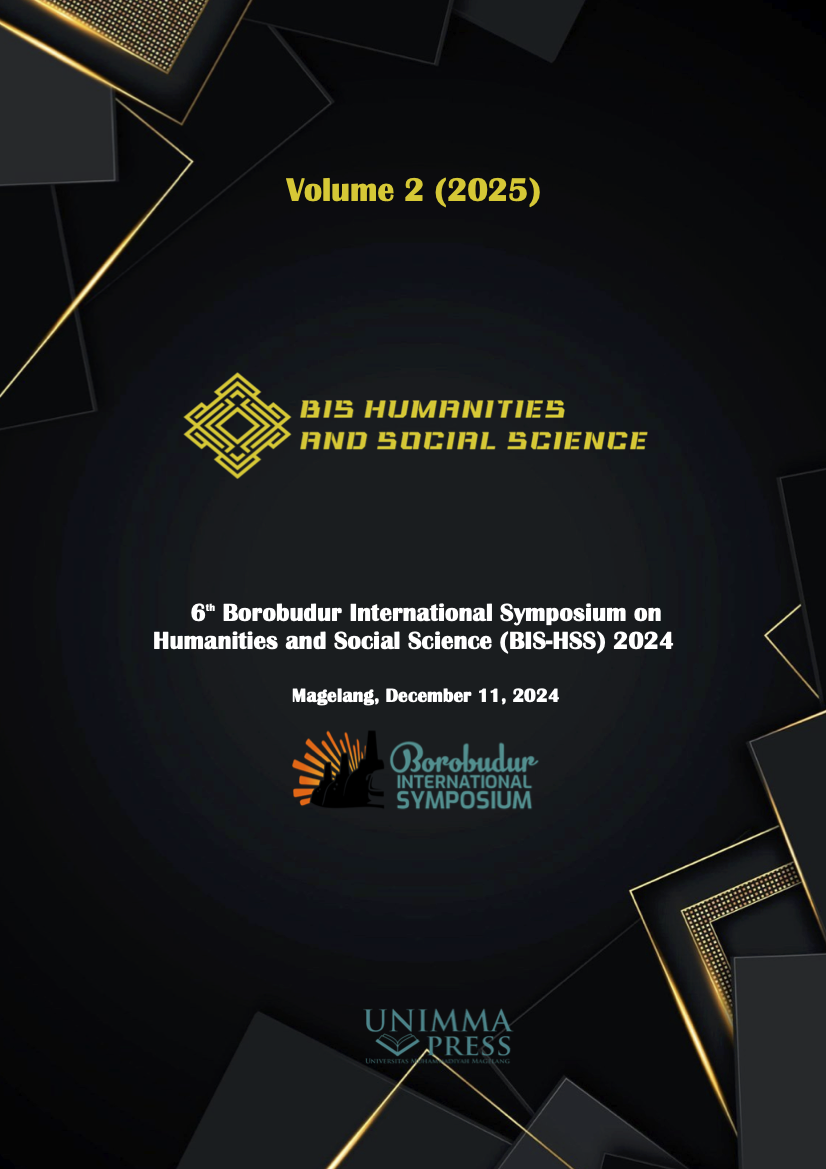Development of peer communication patterns to create an inclusive social environment for children with autism disorder
Keywords:
Autism spectrum disorder, Peer communication, Inclusive education, Social environmentAbstract
This study explores how structured peer communication fosters an inclusive social environment for children with Autism Spectrum Disorder (ASD) at the London School Beyond Academy (LSBA). Using qualitative methods, including interviews and participatory action research, the study identifies three key domains of peer interaction: Play & Activities, Talk, and Helping Others. These interactions enhance social cohesion, mutual support, and communication skills, highlighting the potential of peer-based strategies like gamification and collaborative tasks. The findings align with the goals of inclusive education by reducing inequalities and promoting equitable opportunities, contributing to the Sustainable Development Goal (SDG) 10. This research provides actionable insights for educators and policymakers to create inclusive learning environments that empower children with ASD.
References
[1] D. T. Nugraeni, Marlina, and N. Herari, “Pola Interaksi antara Pengajar dengan Peserta Didik Penyandang Autistik: Studi Kasus Proses Pembelajaran Video Editing di LSBA Jakarta,” Media Komunikasi FPIPS, vol. 23, no. 2, 2024, doi: 10.23887/mkfis.v23i2.83631.
[2] E. E. Soares, K. Bausback, C. L. Beard, M. Higinbotham, E. L. Bunge, and G. W. Gengoux, “Social Skills Training for Autism Spectrum Disorder: a Meta-analysis of In-person and Technological Interventions,” NIH: National Library of Medicine, pp. 166–180, 2020, doi: 10.1007/s41347-020-00177-0.
[3] H. Cullen, S. Billingham, and M. C. St. Clair, “How do children with language disorder perceive their peer interactions? A qualitative investigation,” Autism Dev Lang Impair, 2024, doi: 10.1177/23969415241275775.
[4] Goldstar, “Innovative Strategies For Autism Intervention,” Goldstar Rehab. [Online]. Available: https://www.goldstarrehab.com/parent-resources/peer-mediated-instruction-and-intervention-in-autism
[5] M. Cui, Q. Ni, and Q. Wang, “Review of intervention methods for language and communication disorders in children with autism spectrum disorders,” Brain, Cognition and Mental Health, Aug. 2023, [Online]. Available: https://peerj.com/articles/15735/
[6] K. Klefbeck, “Educational Approaches to Improve Communication Skills of Learners with Autism Spectrum Disorder and Comorbid Intellectual Disability: An Integrative Systematic Review,” Scandinavian Journal of Educational Research, 2021, doi: 10.1080/00313831.2021.1983862.
[7] D. Bercovici, “Autistic speech & nonverbal communication differences,” Embrace Autism. [Online]. Available: https://embrace-autism.com/autistic-verbal-and-nonverbal-communication-differences/
[8] F. Abdi and M. Simbar, “The Peer Education Approach in Adolescents- Narrative Review Article,” NIH: National Library of Medicine, 2013, [Online]. Available: https://pmc.ncbi.nlm.nih.gov/articles/PMC4499060/
[9] A. Topper, “Samples of Social Deficits in Autism,” 2024. [Online]. Available: https://behavioralinterventionforautism.com/blog/examples-of-social-deficits-in-autism/
[10] S. L. Ng et al., “Supporting children with disabilities at school: implications for the advocate role in professional practice and education,” Disabil Rehabil, vol. 37, no. 24, pp. 2282–2290, Nov. 2015, doi: 10.3109/09638288.2015.1021021.
[11] E. Sabrifha and D. Darmawati, “The importance of teacher interpersonal communication as an effort to maintain students’ mental health: a study of lerature review,” Jurnal EDUCATIO: Jurnal Pendidikan Indonesia, vol. 8, no. 2, p. 236, Dec. 2022, doi: 10.29210/1202222931.
[12] E. Knott, A. H. Rao, K. Summers, and C. Teeger, “Interviews in the social sciences,” Nature Reviews Methods Primers, vol. 2, no. 73, Sep. 2022, doi: 10.1038/s43586-022-00150-6.
[13] K. Dunwoodie, L. Macaulay, and A. Newman, “Qualitative interviewing in the field of work and organisational psychology: Benefits, challenges and guidelines for researchers and reviewers,” Applied Psychology, vol. 72, no. 2, pp. 863–889, Jun. 2022, doi: 10.1111/apps.12414.
[14] F. Cornish et al., “Participatory action research,” Nature Reviews Methods Primers, vol. 3, no. 1, p. 34, Apr. 2023, doi: 10.1038/s43586-023-00214-1.
Downloads
Published
Conference Proceedings Volume
Section
License

This work is licensed under a Creative Commons Attribution-NonCommercial 4.0 International License.

